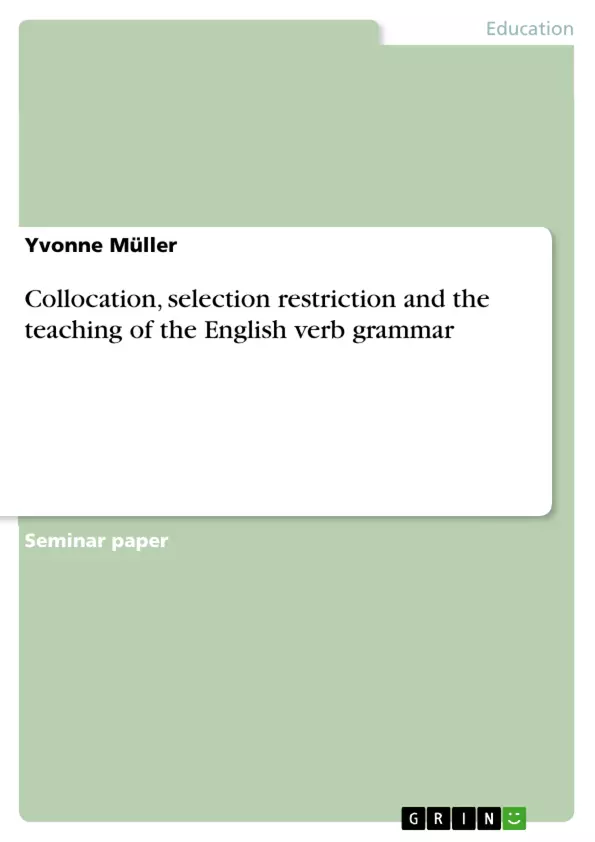The following paper deals with collocation, selection restriction and the teaching of the English verb grammar. The two main parts of the paper will be collocation which describes the syntactic relation of words, and selection restriction which describes the relationship between verbs and animated or non-animated subjects. The place they occupy in school will be analysed. So they should be investigated with a didactic view, but also linguistic aspects should not be completely disregarded, because it is very important especially for teachers to know which word goes together with which term and how to explain these relationships to their pupils. Both, the collocational and the selection restrictional aspect, will have their meaning explained. Then a description of how to use them and at least a few suggestions are given on how to teach collocation and selection restriction in school and how to impart their rules. Therefore, some different suggestions for teaching are given to make allowances for the student’s age and advancement. To amplify what has been explained an exception will be given: poetry as an intentional violation of these rules. The paper ends with a short summary and a final reflection.
Table of Contents
- Introduction
- Collocation
- The Meaning of Collocation
- The Use of Collocation
- The Teaching of Collocation
- Selection Restriction
- The Meaning of Selection Restriction
- The Use of Selection Restriction
- The Teaching of Selection Restriction
- Poetry as an Exception
- Final Reflection
Objectives and Key Themes
This paper investigates collocation and selection restriction in the context of teaching English verb grammar. It aims to analyze the importance of these concepts in the classroom setting, exploring both linguistic and didactic aspects. The paper also examines how to teach these concepts effectively to students of different ages and levels, while also considering exceptions to these rules, such as poetic language.
- The role of collocation and selection restriction in English verb grammar
- Didactic approaches to teaching collocation and selection restriction
- Linguistic aspects of collocation and selection restriction
- Teaching strategies for different student ages and levels
- Exceptions to collocation and selection restriction rules
Chapter Summaries
- Introduction: This chapter provides an overview of the paper's focus on collocation, selection restriction, and their significance in teaching English verb grammar. It highlights the importance of a didactic approach, incorporating both linguistic and teaching aspects, emphasizing the need for teachers to understand the relationships between words and how to explain them effectively to students.
- Collocation: This chapter defines collocation as the syntactic relationship between words, particularly between a verb and a noun phrase, and explains the concept of collocates as words that frequently occur together. The chapter explores different types of collocates, including equal partners and those with different collocational ranges, and delves into the notion of lexical sets and spans within the context of collocation.
- Selection Restriction: This chapter defines selection restriction as the relationship between verbs and their subjects, highlighting the constraint that certain verbs require either animated or non-animated subjects. It examines the importance of understanding selection restriction for teaching verb grammar, providing examples of how different verbs interact with different types of subjects.
Keywords
The key terms and concepts in this paper include collocation, selection restriction, English verb grammar, didactic approach, linguistic aspects, teaching strategies, student ages and levels, exceptions to rules, poetry, and lexical sets.
- Quote paper
- Yvonne Müller (Author), 2006, Collocation, selection restriction and the teaching of the English verb grammar , Munich, GRIN Verlag, https://www.grin.com/document/83034



